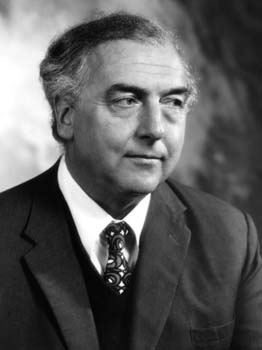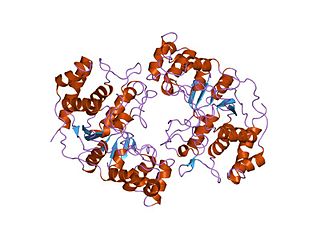
Yeasts are eukaryotic, single-celled microorganisms classified as members of the fungus kingdom. The first yeast originated hundreds of millions of years ago, and at least 1,500 species are currently recognized. They are estimated to constitute 1% of all described fungal species.

Ascomycota is a phylum of the kingdom Fungi that, together with the Basidiomycota, forms the subkingdom Dikarya. Its members are commonly known as the sac fungi or ascomycetes. It is the largest phylum of Fungi, with over 64,000 species. The defining feature of this fungal group is the "ascus", a microscopic sexual structure in which nonmotile spores, called ascospores, are formed. However, some species of the Ascomycota are asexual, meaning that they do not have a sexual cycle and thus do not form asci or ascospores. Familiar examples of sac fungi include morels, truffles, brewers' and bakers' yeast, dead man's fingers, and cup fungi. The fungal symbionts in the majority of lichens such as Cladonia belong to the Ascomycota.
Heterochromatin is a tightly packed form of DNA or condensed DNA, which comes in multiple varieties. These varieties lie on a continuum between the two extremes of constitutive heterochromatin and facultative heterochromatin. Both play a role in the expression of genes. Because it is tightly packed, it was thought to be inaccessible to polymerases and therefore not transcribed; however, according to Volpe et al. (2002), and many other papers since, much of this DNA is in fact transcribed, but it is continuously turned over via RNA-induced transcriptional silencing (RITS). Recent studies with electron microscopy and OsO4 staining reveal that the dense packing is not due to the chromatin.

An ascus is the sexual spore-bearing cell produced in ascomycete fungi. Each ascus usually contains eight ascospores, produced by meiosis followed, in most species, by a mitotic cell division. However, asci in some genera or species can occur in numbers of one, two, four, or multiples of four. In a few cases, the ascospores can bud off conidia that may fill the asci with hundreds of conidia, or the ascospores may fragment, e.g. some Cordyceps, also filling the asci with smaller cells. Ascospores are nonmotile, usually single celled, but not infrequently may be coenocytic, and in some cases coenocytic in multiple planes. Mitotic divisions within the developing spores populate each resulting cell in septate ascospores with nuclei. The term ocular chamber, or oculus, refers to the epiplasm that is surrounded by the "bourrelet".

Schizosaccharomyces pombe, also called "fission yeast", is a species of yeast used in traditional brewing and as a model organism in molecular and cell biology. It is a unicellular eukaryote, whose cells are rod-shaped. Cells typically measure 3 to 4 micrometres in diameter and 7 to 14 micrometres in length. Its genome, which is approximately 14.1 million base pairs, is estimated to contain 4,970 protein-coding genes and at least 450 non-coding RNAs.

The Taphrinomycotina are one of three subdivisions constituting the Ascomycota and is more or less synonymous with the slightly older invalid name Archiascomycetes. Recent molecular studies suggest that the group is monophyletic and basal to the rest of the Ascomycota.

Neolecta is a genus of ascomycetous fungi that have fruiting bodies in the shape of unbranched to lobed bright yellowish, orangish to pale yellow-green colored, club-shaped, smooth, fleshy columns up to about 7 cm tall. The species share the English designation "Earth tongues" along with some better-known fungi with a similar general form, but in fact they are only distantly related.

Schizosaccharomyces is a genus of fission yeasts. The most well-studied species is S. pombe. At present five Schizosaccharomyces species have been described. Like the distantly related Saccharomyces cerevisiae, S. pombe is a significant model organism in the study of eukaryotic cell biology. It is particularly useful in evolutionary studies because it is thought to have diverged from the Saccharomyces cerevisiae lineage between 300 million and 1 billion years ago, and thus provides an evolutionarily distant comparison.

Phytochelatins are oligomers of glutathione, produced by the enzyme phytochelatin synthase. They are found in plants, fungi, nematodes and all groups of algae including cyanobacteria. Phytochelatins act as chelators, and are important for heavy metal detoxification. They are abbreviated PC2 through PC11.

RevCen is a family of non-coding RNA found in Schizosaccharomyces. It is a megastructure containing several siRNA which use the RNAi pathway to regulate heterochromatin formation. The long RNA transcript forms a secondary structure with several stem-loops which are processed by dicer into siRNA. This siRNA then initiate the formation of heterochromatin at the centromeres of fission yeast. Northern blot analysis confirmed the siRNAs were produced from the large RNA structure RevCen in vivo. As with all siRNAs, the enzyme dicer is responsible for dissecting dsRNA into the 21nt stretch of double-stranded RNA. Human recombinant dicer enzyme processed the RevCen structure in vitro, though the same activity by yeast Dcr1 has not been confirmed.

The Honourable John Murdoch Mitchison FRS, FRSE was a British zoologist.

Mitsuhiro Yanagida ForMemRS is a Japanese molecular biologist known for research on cell cycle and chromosome structure using the fission yeast Schizosaccharomyces pombe. He was elected as a foreign member of the Royal Society on 11 May 2000.

In molecular biology the protein domain XPG refers to, in this case, the N-terminus of XPG. The XPG protein can be corrected by a 133 kDa nuclear protein, XPGC. XPGC is an acidic protein that confers normal ultraviolet (UV) light resistance. It is a magnesium-dependent, single-strand DNA endonuclease that makes structure-specific endonucleolytic incisions in a DNA substrate containing a duplex region and single-stranded arms. XPGC cleaves one strand of the duplex at the border with the single-stranded region.

A septum in cell biology is the new cell wall that forms between two daughter cells as a result of cell division.

Urs Leupold was a Swiss geneticist whose studies of the fission yeast Schizosaccharomyces pombe were instrumental in establishing this organism as a key model system for eukaryotic cell and molecular biology. Leupold began his studies of S. pombe in 1946 upon encouragement by Øjvind Winge. In 1947, Leupold determined that a culture of S. pombe str. liquefaciens contained strains expressing four distinct mating types: h40, h90, h+, and h−. Most current S. pombe laboratory strains are derived from the h90, h+, and h− strains known as 968, 975, and 972.
PomBase is a model organism database that provides online access to the fission yeast Schizosaccharomyces pombe genome sequence and annotated features, together with a wide range of manually curated functional gene-specific data. The PomBase website was redeveloped in 2016 to provide users with a more fully integrated, better-performing service.

Robin Campbell Allshire is Professor of Chromosome Biology at University of Edinburgh and a Wellcome Trust Principal Research Fellow. His research group at the Wellcome Trust Centre for Cell Biology focuses on the epigenetic mechanisms governing the assembly of specialised domains of chromatin and their transmission through cell division.
Paul Lindner was a German chemist and microbiologist, best known for discovering the fission yeast Schizosaccharomyces pombe.

Canto is a web-based tool to support the curation of gene-specific scientific data, by both professional biocurators and publication authors. Canto was developed as part of the PomBase project, and is funded by the Wellcome Trust.
ERG5 or Sterol 22-desaturase is a cytochrome P450 enzyme in the ergosterol biosynthesis pathway of fungi Saccharomyces cerevisiae, with the CYP Symbol CYP61A1. CYP61A1 is one of only three P450 enzyme found in baker's yeast, the other two are CYP51F1 and CYP56A1. The ortholog in Schizosaccharomyces pombe, was named CYP61A3 for historical reasons, and is only one of two P450 enzyme found with CYP51F1. ERG5 catalyzes the C22-C23 double bond formation on the sterol side chain of ergostatrienol to convert it into ergostatetraenol, then the C24 double bond of ergostatetrenol will be hydrogenation reduced into ergosterol by ERG4.














